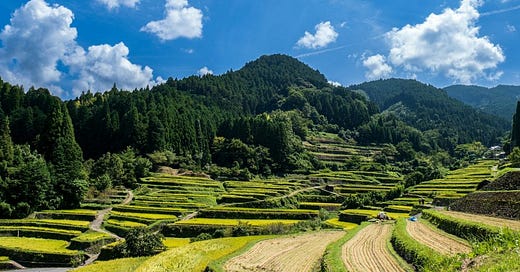A Personal Revelation
Tokyo, 2009. I sat at a minimalist table in Créations de Narisawa, then a seasoned investment banker accustomed to dining at the world's finest establishments. What arrived before me wasn't merely food—it was revelation manifested on a plate.
The dish—Chef Narisawa's "Satoyama Scenery"—transcended culinary experience. It wasn't just exquisitely prepared ingredients; it was poetry rendered in texture and flavor, a harmonious composition that spoke of an intimate relationship with the land. Each element told a story of place, of cycles honored, of boundaries respected yet abundance achieved.
"OMG, What is this?!?!" I thought. "This isn't food, this is poetry, music, colours.”
What I was experiencing were the unseen elements, this was a philosophy, a relationship. I was in the presence of a truth.
That moment marked my first encounter with Satoyama principles—not as abstract concepts but as lived experience that I could taste, smell, and feel, transforming my understanding of what's possible when humans and nature dance as partners rather than adversaries.
I share this now because everything in my work stems from direct, sensory experience—never from screens or Google searches, but from what I've touched, tasted, witnessed, and felt reshape my being. Truth isn't theoretical; it's experiential. And the truth I experienced that day in Tokyo continues to inform my understanding of regenerative systems.
In the relentless pursuit of agricultural efficiency we have food void of virtue.
We've engineered ourselves into a corner—creating systems that yield plenty yet simultaneously deplete the very foundations upon which they stand.
Our modern agricultural paradigm resembles a business that cannibalizes its own capital to show short-term profits, oblivious to the inevitable bankruptcy looming on the horizon.
But what if there exists a model that transcends this zero-sum game?
What if abundance and sustainability aren't opposing forces but natural partners in a dance choreographed by centuries of wisdom?
This isn't a hypothetical question.
The answer thrives today on an island nation that has mastered the art of creating extraordinary abundance within natural boundaries—a system I've witnessed firsthand, whose fruits I've tasted, whose wisdom has transformed my understanding of what's possible.




